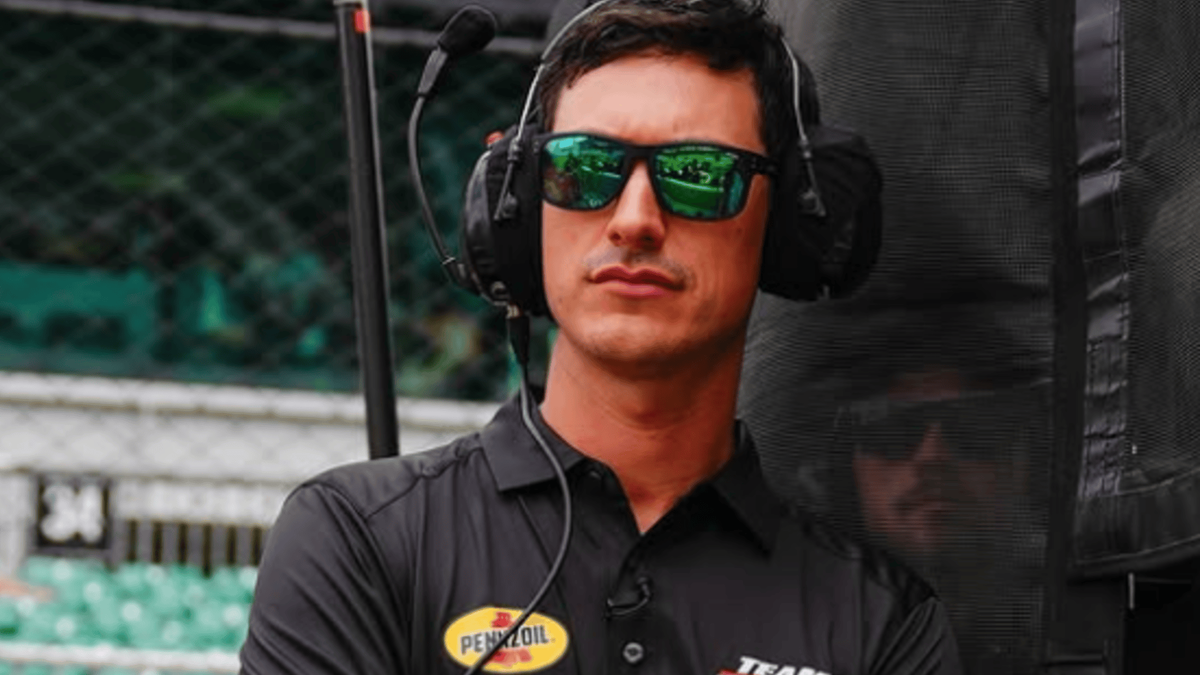

When NASCAR rolled out the Next-Gen car in 2022, it was supposed to be a game-changer. A new era. A new level playing field. But well before we entered its fourth season, fans and drivers alike were calling it what it is: all show and no go. Sure, the car looks sharp and handles well on superspeedways, but for short tracks—the bread and butter of stock car racing—it’s been a major letdown.
Watch What’s Trending Now!
Once rowdy bullrings like Martinsville and Richmond now look more like casual Sunday drives, with barely any passing, almost no beating and banging, and a product that’s flatlining right in front of the fans who crave racing chaos. However, NASCAR’s got a fix in mind: give the car a little more horsepower. But Joey Logano’s not buying it. The 3-cup series champion laid it out straight ahead of the Cracker Barrel 400 on Sunday.
ADVERTISEMENT
Joey Logano pushes back on small HP gains
The #22 driver isn’t one to mince words, and when it comes to NASCAR’s proposal to modestly increase horsepower in the Next-Gen cars, he’s clear: it’s a step, but not a leap. In a recent interview with Frontstretch’s Dalton Hopkins, Logano acknowledged that while adding 60–70 hp might be better, it’s far from the transformative change needed to revitalize short track racing.
Logano said, ” I think it’s directionally better. I don’t think it’s gonna be game-changing, but I do think it’s the right way, and if we can do that fairly easily, then good, right? I don’t. If you’re talking about adding back to 950 horsepower, I’m gonna say something different. We’re talking about adding 60-70 horse. Yeah, it’s not gonna be much, right, but it’s definitely cool.” 900+ horsepower seems like a pipe dream in modern NASCAR. The rising engine costs to go with the reduced durability at 900 HP make it a financial burden for smaller teams. However, Logano feels that things outside of just horsepower need to be considered to see a significant change.
Joey Logano didn’t just pump the brakes on the idea—he walked us through the mechanical minefield that comes with it. More horsepower means more strain, not only on engines but also on transmissions, rear ends, and other internal components that are designed for a lower output. In other words, you can’t just slap on 70 extra horsepower and expect everything else to hold. And all those upgrades? They come with a hefty price tag.
ADVERTISEMENT
Logano added, “I like it. I want to do it, but I also think there’s a lot of pieces that have to go together to make all that work, right? Like not just the engine, but the drivetrain, all like it’s got to be beefed up more, added cost to some other things, too. So, not that we want to talk about cost, you want just to make the racing better, right? That’s whatever that is, and that’ll be good for everybody, but I think you just got to be smart because every action has a reaction, and is it that paired with something else, right? Like maybe it’s not just that; maybe we need to start thinking about some other pieces to that. Maybe you can help.”
His message was clear: unless NASCAR passes these changes with a larger, more coordinated overhaul, teams will be left juggling performance, durability, and their budget—and that’s a recipe for more disaster than fix.
ADVERTISEMENT
“I don’t think it’s going to be game changing, but I do think it’s the right way. … If we’re adding back to 950 hp, I’m going to answer different. If we’re talking about adding 60-70 hp… ehh”
Joey Logano wants to see a big hp increase rather than a small one #NASCAR… pic.twitter.com/i9Nz2OR9SG
— Dalton Hopkins (@PitLaneCPT) May 31, 2025
Kyle Busch, another veteran with a reputation for candidness, echoed Team Penske’s driver’s skepticism. When I asked about the potential horsepower increase, Rowdy bluntly responded with, “I’ll believe it when I see it. I think everything that we’ve done with this car from the old car is bigger tires, bigger brakes, less horsepower. It’s just not conducive to better racing, in my opinion. A lot of times, the Xfinity Series is better, and that’s the old car we have.”
The culprit, as many drivers see it, isn’t just the lack of horsepower – it’s the patchwork approach to fixing what’s broken. For too long, changes have come in half measures—a tweak to the Aero package here, a tire compound shift there. But now, with pressure mounting from drivers like Logano and Busch, NASCAR seems to be feeling the heat.
ADVERTISEMENT
NASCAR Senior Vice President of Competition Elton Sawyer has acknowledged that the increase in horsepower is on the table. He mentioned ongoing collaborations with stakeholders and engineers to explore the feasibility of such changes. In an interview with SiriusXM NASCAR Radio, he goes on to promise the NASCAR community.
Sawyer said, “It’s on the table. We are working closely with all the stakeholders in the industry, and as I said, the collaboration has been better than ever in our sport on all topics. This particular one had a team owner council meeting last week, and we discussed that. Working closely, I know [senior vice president of innovation and racing development] John Probst had a conversation with our engine builder to see what we could do, how that would look, and what changes would need to be made.”
While skeptics like Joey Logano and Kyle Busch are urging caution on horsepower changes, others in the NASCAR garage are ready to throw the hammer down. The message? Enough talking. It’s time to bring the thunder back.
ADVERTISEMENT
Top Stories
What Is NASCAR’s 5-Strike Rule That Could Change Its Future? Check All Details Here
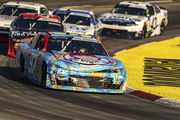
Rick Hendrick Strikes Fear in NASCAR Fans With Chevy’s New “Illegal” Car
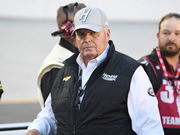
Dale Jr. Reveals How Permanent Charters Could Turn NASCAR Into a Billionaire’s Club With a Brutal Reality Check
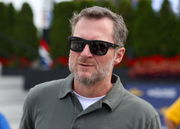
Jimmie Johnson’s NASCAR Driver Sends Ripples Through Garage With Early Retirement Confession
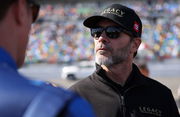
Martin Truex Jr’s Former Crew Chief Ends 12-Year Fight In Huge Personal Announcement

Drivers demand power, not promises
Denny Hamlin has never been shy with his opinions, and he is front and center in this push. “You hear [Steve] O’Donnell talk about it because reporters ask him constantly, ‘The drivers overwhelmingly want this. It seems like the fans want this; why not? They [NASCAR] usually have a reason, but sometimes it’s, ‘Hey, we’re looking at all options; we’re not ruling it out; we’re not saying we are,’ right?” Hamlin captures the growing frustration among drivers very well. He’s not just speaking for himself; he’s channeling the collective energy of a garage that’s tired of feeling neutered by the current package.
Joining him is Kyle Larson, who laid it out plain and simple on the Dale Jr Download in 2024: “At least try it. Just take us to, I don’t know, Richmond or wherever, and go test.” Larson’s not asking for a complete overhaul overnight—he’s asking for effort. Experimentation. A willingness to see what the racing could be like with real muscle under the hood. If you want great racing, you need great power.
ADVERTISEMENT
And just when it seemed like the conversation was shifting into high gear, Dale Earnhardt Jr. jumped in with the gearhead’s curveball. To him, the problem isn’t just about power—it’s about what the drivers are forced to do with the current setup. Earnhardt Jr. said in 2024, “I’m telling you, even with all of that [horsepower talk], I still want them to try and work on getting rid of the shifting. I do not think that even though they are getting to where it’s second nature to them to shift, having to drive into a corner and downshift and then do another shift on the next straightaway, doing that for every single corner, for 500 laps at Martinsville, right? That takes away from your processing on how to set the corner up, how to set up the car in front of you, how to make a difference in the corner.”
Together, these voices, from past champions to current contenders, are turning up the heat. The call isn’t just for faster cars—it’s for smarter racing. For real action. For NASCAR to take the gloves off and give fans the kind of on-track battles that made them fall in love with the sport in the first place.
Will NASCAR finally hit the gas, or are we in for more talk and less torque? Let us know in the comments!
ADVERTISEMENT
ADVERTISEMENT
ADVERTISEMENT
ADVERTISEMENT

